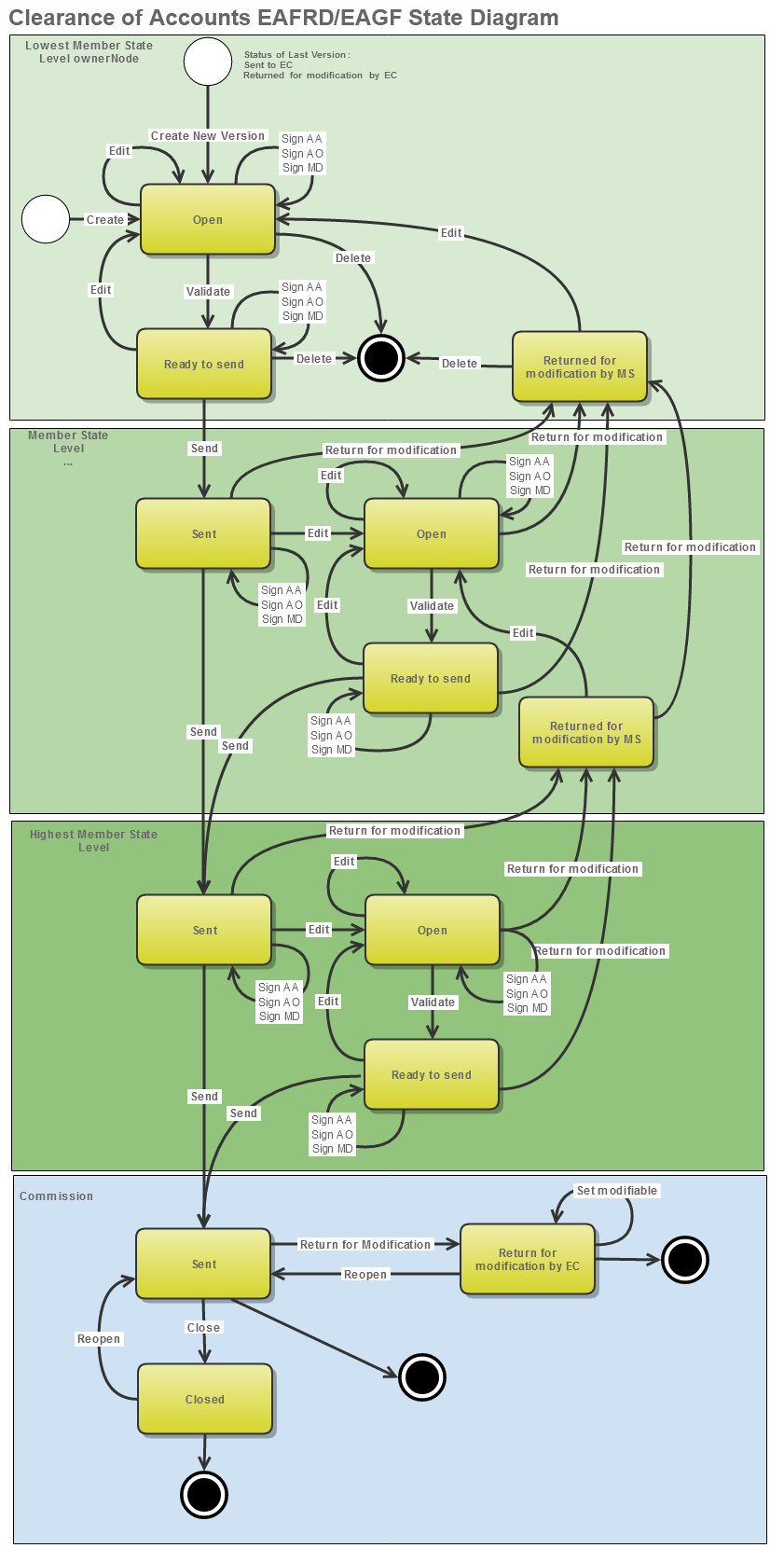ACC - Appendix 1 - Total Amount of corresponding payments made to beneficiaries (column C)
Which amount should I enter in the table?
- the amount entered in the last payment application?
- the amount paid to beneficiaries? (because of overpayment A > B)
The same amounts as you would declare in the payment applications. If a final payment application for that accounting year was submitted the system will automatically take its amounts. When no final payment was submitted the most recent amounts for that accounting year as if it was a final payment application declaration has to be entered.
ACC - Expenditure - Should the Accounts be submitted if there's no expenditure in the Accounting year?
Yes, the Accounts should be submitted (with zero expenditure), a disclaimer of opinion can be issued (in section Audit opinion > Opinion).
The updated guidance note "Guidance for Member States on the Annual Control Report and Audit Opinion to be reported by audit authorities and on the treatment of errors detected by audit authorities in view of establishing and reporting reliable total residual error rates (EGESIF_15-0002-04)" is published on Inforegio(*) under Management and Control and clarifies that:
(refer to page 37)
ACC - Should a Final Payment Application be submitted first to be able to send the Accounts?
Yes, unless no expenses are declared in Appendix 1 and Appendix 7 of the Accounts.
When creating the Accounts the system automatically copies the amounts in Appendix 1 and Appendix 7 from the Final Payment Application for the Accounting year.
If the Final Payment Application has not been submitted in SFC2014, the same amounts that would be declared in the Final Payment Application should be entered in Appendix 1 and Appendix 7.
OP - S2 Indicators - How do I add COVID19 specific indicators?
If you need to add Covid-specific indicators there is a set of pre-defined indicators/codes that you can use.
The new COVID indicators are not in the drop down list for common result/output indicators – you must enter them manually as a new programme specific indicator and when you click on 'update' the system then checks if it’s a ‘reserved’ code for COVID. Once defined it can be reused like the other already defined specific indicators.
RDP - 5.2 Measures - How to add the new COVID-19 measure M21 in the Rural Development Programmes (EAFRD)?
The new measure "M21: Exceptional temporary relief to farmers and SMEs active in processing, marketing and/or development of agricultural products particularly affected by the COVID-19 crisis (art 39b)" can now be added in the Rural Development Programmes (by Priorities/Focus Area) from the Strategy chapter 5.2:
RDP - Documents - Documents are not copied from previous versions
When creating a new version of a Rural Devolpment Programme, documents are not copied automatically from the previous version.
It is possible to force this copy afterwards by clicking on the button highlighted in the screenshot below:

IR - Financial Instruments covering more than one Priority Axis
In SFC2014 the name of the financial instrument is used as an identifier and each name can be used only once. If a financial instrument covers more than one Priority Axis, and in order to provide the data for all contributions to the financial instrument, the appreciation of the priority axis should be added under different names, for example, Investment Holding PA1, Investment Holding PA2, … in the IR (section 8)
IR - Table 2C - Achievement ratio calculation rules
In case the measurement unit of both the indicator and its target is numerical, SFC2014 automatically calculates the achievement ratio by dividing the cumulative value with the target.
In case the indicator or the target is expressed in percentages,
IR - Tables 8, 9, 10 & 11 - Zero values
For tables 8, 9 & 10 the tables need to be filled out with ‘0’ even if this value is due to the fact that the corresponding provisions wasn't used in the regulatory framework. The Commission cannot check whether these provisions were applied or not, as this information is not part of the Operational Programme. However, if there are 0 values in the financial tables on the number of selected operations, it can be concluded that the blanks in tables 8-10 can only mean a 0 value.
